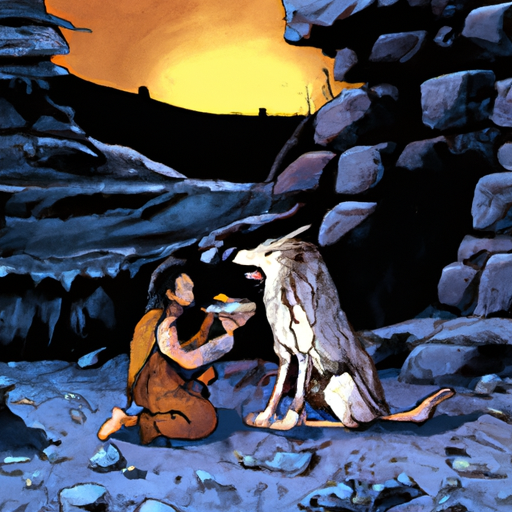1. The Origin of Canine Companionship
You might have heard the phrase that a dog is a man’s best friend, but have you ever wondered how this friendship started? Well, according to researchers, the story began approximately 15,000 to 20,000 years ago.
The Canis lupus or the grey wolf, which is considered the closest ancestor of dogs, began to interact with our ancestors, the Paleolithic humans. These interactions led to a mutual relationship, a symbiosis of sorts, that eventually resulted in the domestication of dogs.
Here’s a brief timeline:
- 20,000 years ago: Initial interaction between humans and wolves.
- 15,000 years ago: Visible changes in the wolf’s behavior and physical appearance.
- 10,000 years ago: Clear evidence of domesticated dogs appearing in archaeological findings.
2. The Process of Domestication
Now, you may be curious about how this process of domestication took place. It wasn’t an overnight event but a gradual process that took thousands of years.
- Natural Selection: Wolves that were less afraid of humans started to approach human camps to scavenge for food. These wolves had a survival advantage and passed on their genes to the next generation.
- Artificial Selection: Over time, humans started to selectively breed wolves that exhibited desirable traits, such as tameness, loyalty, and an ability to follow commands.
| Steps in Domestication | Description |
|---|---|
| Natural Selection | Wolves with less fear towards humans had a survival advantage. |
| Artificial Selection | Humans selectively bred wolves with desirable traits. |
3. The Role of Humans in the Domestication Process
As caregivers, we understand the importance of nurturing and providing care which was precisely the role our ancestors played in this domestication process.
Our ancestors realized the benefits of having these domesticated wolves around. They served as protectors against predators, helped in hunting, and even provided companionship. Thus, humans started to train and breed these wolves, eventually leading to the diverse breeds of dogs we see today.
4. The Result of Domestication
Today, we have over 340 different breeds of dogs, each with unique traits and characteristics. This incredible diversity is a testament to the thousands of years of domestication and selective breeding.
From tiny Chihuahuas to large Alaskan Malamutes, each breed carries a bit of history in their genes. As caregivers, we have the responsibility to understand and appreciate this history and provide the best care possible to our furry friends.
5. FAQs
Q1: When did the domestication of dogs start?
- It’s believed to have started around 15,000 to 20,000 years ago.
Q2: What was the first step in dog domestication?
- The first step was natural selection, where wolves with less fear towards humans had a survival advantage.
Q3: How many breeds of dogs exist today?
- There are over 340 different breeds of dogs today.
Q4: What role did humans play in dog domestication?
- Humans played a crucial role in artificial selection, selectively breeding wolves with desirable traits.
Q5: Why did humans domesticate dogs?
- Dogs served as protectors against predators, helped in hunting, and provided companionship.
In conclusion, the story of how dogs were domesticated is a tale of survival, friendship, and evolution. It’s a testament to the power of caregiving and the enduring bond between humans and dogs. So, next time you look at your pet pooch, remember the incredible journey of their ancestors, from wild wolves to faithful companions.



